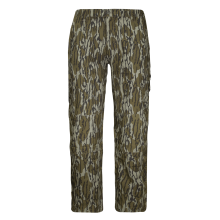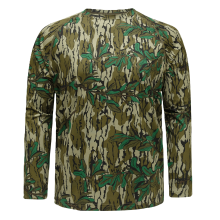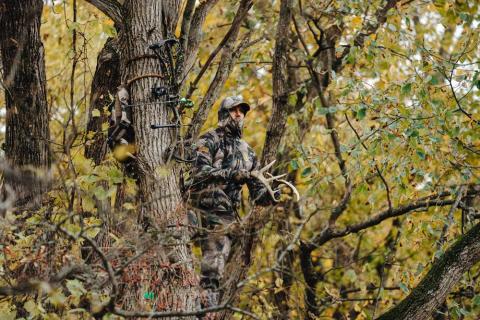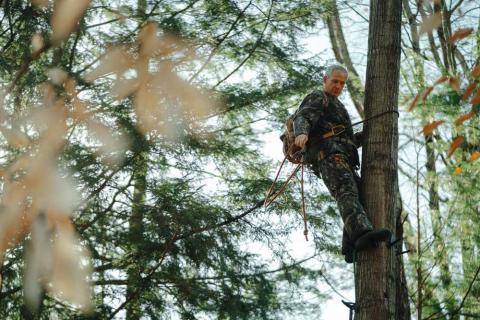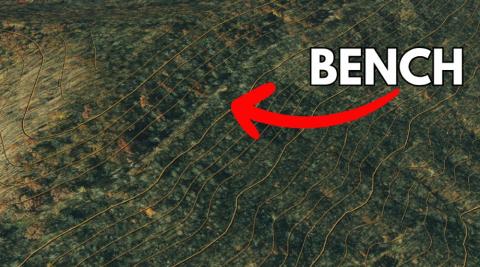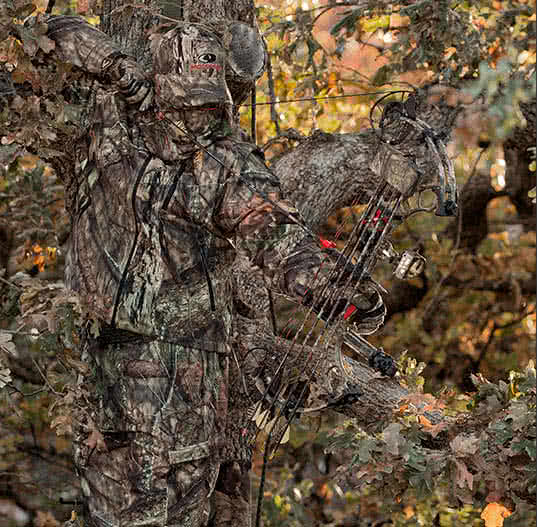Heath Wood

The summer months present a prime opportunity for scouting whitetails. Bucks are in velvet, rapidly developing their antlers, and often follow consistent feeding routines. However, many hunters make the mistake of getting too close too early. Just because it’s not hunting season doesn’t mean pressure isn’t important. Mature bucks are already accustomed to human presence, and one wrong move in July or August can cause a big deer to leave long before opening day.
Last season, I had a cellular camera in an area that had been known over the past three seasons to host a bachelor group of bucks, which would congregate throughout the summer and during the first few weeks of hunting season. Like clockwork, a mature, heavy, dark chocolate antlered buck started showing up each morning. Sometimes he was with three smaller bucks, and other times he was alone. Knowing he was a mature buck, I understood I needed to stay away from that area as much as possible to avoid bumping him out. When the season opened on September 15th, I closely watched for his appearance. When the time was right, I planned to sneak in to hunt. After three straight days of the buck showing up on camera at the same time, it was time to make a move.
To avoid spooking the buck, I made my way to the stand about an hour before first light. Just ten yards into the woods, I jumped a deer, hearing its heavy stomps crash down the hill. My heart sank. Please don’t let that be him, I thought. I kept moving, got settled in, and prepared for an extended, quiet sit, hoping he’d show like he had the past few mornings. Forty-five minutes earlier than on the previous three days, he was standing right under my stand. Well before legal shooting light, I sat as still as I could. With a hint of moonlight filtering through the trees, I caught a glimpse of light reflecting off his tall antlers. After what felt like an eternity, the buck wandered around for a few minutes, then disappeared. I spent the rest of the morning with nothing to show for it, except for one close call I couldn’t even see.

It got worse; the days after my close call with the mature buck were marked by a streak of no pictures on my camera, except for the occasional doe passing through. No more of my hit list, buck, and not a glimpse of the bachelor group that had been hanging out. The slightest jarring of my presence accelerated the process of the bucks splitting apart and altering their travel patterns.
When we think about pushing deer out of an area, we often associate it with hunting, as was the case for me. However, one of the biggest mistakes hunters make occurs in July and August when checking cameras, scouting, or hanging stands. Deer also avoid humans during the summer, especially if they sense an increase in human activity. To avoid this mistake, there are low-impact scouting strategies that allow you to gather information without alerting your target buck. From glassing fields to deploying cameras wisely and mastering stealthy access routes, these techniques can help you scout effectively without overdoing it.
Why Low-Impact Scouting Matters in Summer
Summer may seem like a time when deer are more relaxed, and to a degree, they are. Bucks are still in bachelor groups, feeding heavily in predictable patterns, and haven’t yet been pressured by the fall onslaught. But that doesn’t mean they’ll tolerate repeated disturbances. A mature buck that feels uneasy about an area in July may shift his core range before you even get a chance to hang a stand. Just like during hunting season, staying invisible pays off. Instead of thinking, “It’s still a long way from season, it won’t hurt anything,” focus on keeping your impact minimal. Summer scouting and prep work are still important. You can continue to gather valuable intel on bucks in their natural patterns and start forming a strategy, all without alerting them to your presence.

Glassing From A Distance
One of the best ways to scout without ever entering a buck’s core area is by glassing from afar. Soybean fields, alfalfa plots, and even clover fields can be prime locations for evening observation in July and August. I enjoy spending many of my summer evenings with my favorite binoculars, the Vortex Razor 10X52s. I have sat on top of hay bales, in the cabs of farm machinery, and at the top of a high, shaded vantage point to simply watch for bucks. It is vital to pay attention not just to where bucks enter the field but also to when and how. This helps you backtrack their likely bedding area without ever setting foot in it, that knowledge can be used when it’s time to hunt.
“Smart” Trail Camera Placement
Remote cameras, such as the Stealth Cam Revolver Pro, are among the most effective and low-impact scouting tools available, and they are among the most innovative products hunters can use when operated correctly. Cameras enable you to monitor deer activity around the clock, but the key is to place them in a way that minimizes disturbance. Position cameras on field edges, mineral sites (if legal), water sources, or transition trails, then leave them undisturbed. The benefit of cellular trail cameras is that they eliminate the need for repeated trips to check cards. If you need to use a traditional SD card camera, visit only during the heat of the day when deer are least active. Wear rubber boots and scent control gear to reduce your impact. Another way to avoid disturbing bucks is never to place cameras deep in the bedding cover. Instead, find pinch points or staging areas between bedding and food sources where you can gather intel without pushing a buck from his bed.

Silent Entry and Exit Strategies
Whether you're hanging a camera, glassing from a distance, or doing a quick observation sit, how you enter and exit an area can make or break your scouting effort. Scout routes ahead of time using aerial maps or hunting apps like HuntStand to identify low-impact entry points. Use creeks, fence lines, logging roads, or overgrown ditches for concealed approaches, and avoid walking through food plots or bedding edges unless necessary. When you arrive at your destination, trim lanes or place cameras quickly and quietly, limiting your time in the woods. Lastly, always scout with the wind in your favor, even during the summer. Mature bucks don’t wait until September to start checking the wind, and your scent lingers long after you leave.
Putting It All Together
Low-impact scouting is all about thinking like a buck. If you wouldn't hunt an area because of the wind or entry route, don’t scout it that way either. Your job during summer scouting is to gather information without the deer ever knowing you were there. Big bucks don’t tolerate human pressure, even in the off-season. They may not snort and blow like a doe in November, but rest assured, they’ll slip out of a core area quietly and vanish before you even realize what went wrong. The good news is that when you adopt a low-impact approach, you can monitor these mature deer all summer long, learn their tendencies, and be waiting in the right place when the opener arrives.













